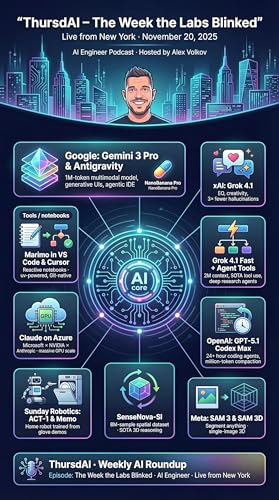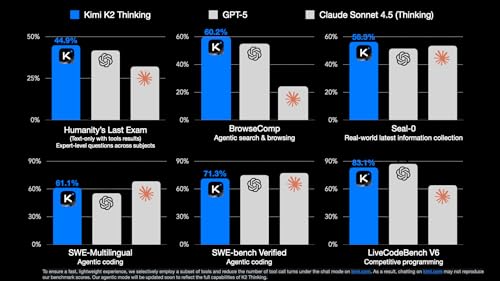Hey everyone, Alex here! Welcome... to the browser war II - the AI edition! This week we chatted in depth about ChatGPT’s new Atlas agentic browser, and the additional agentic powers Microsoft added to Edge with Copilot Mode (tho it didn’t work for me) Also this week was a kind of crazy OCR week, with more than 4 OCR models releasing, and the crown one is DeepSeek OCR, that turned the whole industry on it’s head (more later) Quite a few video updates as well, with real time lipsync from Decart, and a new update from LTX with 4k native video generation, it’s been a busy AI week for sure! Additionally, I’ve had the pleasure to talk about AI Browsing agents with Paul from BrowserBase and real time video with Kwindla Kramer from Pipecat/Daily, so make sure to tune in for those interviews, buckle up, let’s dive in! Thanks for reading ThursdAI - Recaps of the most high signal AI weekly spaces! This post is public so feel free to share it.Open Source: OCR is Not What You Think It Is (X, HF, Paper)The most important and frankly mind-bending release this week came from DeepSeek. They dropped DeepSeek-OCR, and let me tell you, this is NOT just another OCR model. The cohost were buzzing about this, and once I dug in, I understood why. This isn’t just about reading text from an image; it’s a revolutionary approach to context compression.We think that DeepSeek needed this as an internal tool, so we’re really grateful to them for open sourcing this, as they did something crazy here. They are essentially turning text into a visual representation, compressing it, and then using a tiny vision decoder to read it back with incredible accuracy. We’re talking about a compression ratio of up to 10x with 97% decoding accuracy. Even at 20x compression they are achieving 60% decoding accuracy! My head exploded live on the show when I read that. This is like the middle-out compression algorithm joke from Silicon Valley, but it’s real. As Yam pointed out, this suggests our current methods of text tokenization are far from optimal.With only 3B and ~570M active parameters, they are taking a direct stab at long context inefficiency, imagine taking 1M tokens, encoding them into 100K visual tokens, and then feeding those into a model. Since the model is tiny, it’s very cheap to run, for example, alphaXiv claimed they have OCRd’ all of the papers on ArXiv with this model for $1000, a task that would have cost $7500 using MistalOCR - as per their paper, with DeepSeek OCR, on a single H100 GPU, its possible to scan up to 200K pages! 🤯 Really innovative stuff! OCR and VLM models had quite a week, with multiple models besides DeepSeek OCR releasing, models like Liquids LFM2-VL-3B (X, HF), and the newly updated 2B and 32B of Qwen3-VL (X, Hugging Face), and AI2’s olmo-ocr 2-7B (X, HF). The Qwen models are particularly interesting, as the 2B model is a generic VLM (can also do OCR) and is close to previous weeks 4B and 8B brothers, and the newly updated 32B model outperforms GPT-5 mini and Claud 4 sonnet even! The Browser Wars are BACK: OpenAI & Microsoft Go AgenticLook, I may be aging myself here, but I remember, as a young frontend dev, having to install 5 browers at once to test them out, Chrome, Internet Explorer, Firefox, Opera etc’. That was then, and now, I have Dia, Comet, and the newly released Atlas, and, yeah, today I even installed Microsoft Edge to test their AI features! It seems like the AI boom brought with it a newly possible reason for folks to try and take a bite out of Chrome (who’s agentic features are long rumored with project mariner but are nowhere to be found/shipped yet) OpenAI’s ChatGPT Atlas: The Browser Reimagined (X, Download)OpenAI is proving that besides just models, they are a product powerhouse, stepping into categories like Shopping (with a shopify integration), app stores (with ChatGPT apps), social (with Sora2) and now... browsers! This week, they have launched their tightly integrated into ChatGPT browser called Atlas, and it’s a big release! I’ll split my review here to 2 parts, the browser features part and the agentic part. New fresh take on a chromium based browserThe tight integration into ChatGPT is everywhere in this browser, from the new tab that looks like the basic ChatGPT interaface, one line of text, to the sidebar on the left that... is the ChatGPT web sidebar with all your chats, projects, custom GPTs etc. The integration doesn’t stop there, as you have to sign in to your ChatGPT account to even use this browser (available only to MacOS users, and Pro, Plus and Nano tiers). The browser has a few neat tricks, like a special tool that allows you to search your browsing history with natural language, a-la “what were those shoes I was looking at a few days ago” will find your the tabs you browsed for shoes. A special and cool feature is called, confusingly “Cursor”, wherein you can select a text, and then click the little OpenAI logo that pops ...
続きを読む
一部表示
 1 時間 29 分
1 時間 29 分 2025/11/131 時間 10 分
2025/11/131 時間 10 分 1 時間 33 分
1 時間 33 分 1 時間 37 分
1 時間 37 分 1 時間 35 分
1 時間 35 分 1 時間 35 分
1 時間 35 分 1 時間 41 分
1 時間 41 分 1 時間 40 分
1 時間 40 分

